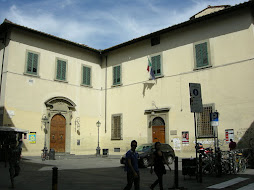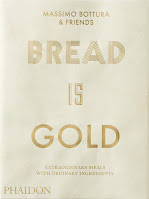Why a 16th century Pope decreed that 10 days would not happen
The Gregorian Calendar, which is used today by every country in the world with just four exceptions, was introduced by Pope Gregory XIII on this day in 1582.
The cover page of the first printed
edition of the calendar, in 1582
The calendar replaced the Julian calendar, which had been implemented by Julius Caesar in 46 BC but which was based on a miscalculation of the length of the solar year and had gradually fallen out of sync with the seasons.
The Catholic Church wanted to make the change because the actual spring equinox - one of the two days in each year when the sun appears directly above the equator - was drifting further away from the ecclesiastical date of the equinox, which in turn determines the date of Easter.
In Christian tradition, Easter marks the resurrection of Jesus three days after his crucifixion, which historical evidence suggests occurred around the time of the spring equinox, nominally dated as March 21.
The miscalculation in the Julian calendar seems tiny, an assumption that the average solar year was exactly 365.25 days when the reality is 365.2422 days. Yet even after the inclusion of the supposedly corrective leap year every four years, the error meant that over the 1,628 years of the calendar’s use, the gap between the actual equinox and the date of the equinox in the ecclesiastical year had grown to 12.7 days.
Aloysus Lilius, one of a number of Italian scientists invited by Pope Gregory XIII to submit proposals for how the calendar might be reformed, realised that the addition of a leap year on an unvarying four-year cycle still made the calendar slightly too long.
Lilius - sometimes called Luigi Lilio or Luigi Giglio - came up with a variation that adds leap days in years divisible by four, unless the year is also divisible by 100. If the year is also divisible by 400, a leap day is added regardless.
 |
| A bust of the scientist Aloysus Lilius |
The formula did not completely correct the problem, but reduced the drifting apart of the solar equinox and the ecclesiastical equinox to just a few seconds per year, which means it will take until 4909 for the solar year and the Gregorian calendar year to be just one day out of sync.
The more dramatic part of the change came in correcting the cumulative effect of the Julian calendar’s miscalculation so that re-alignment could happen immediately. To make this happen, 1582 was shortened by 10 days.
Thus when midnight was reached on Thursday, October 4, the date of the next day was changed to Friday, October 15.
The Gregorian calendar also renumbered the leap day as February 29, ending the practice in the Julian Calendar by which every four years February 24 lasted 48 hours rather than 24.
Nowadays, only four countries in the world - Afghanistan, Iran, Ethiopia and Nepal - do not use the Gregorian calendar, although its acceptance when first introduced was by no means universal and it was several hundred years before it became recognised as the world’s calendar.
 |
| Pope Gregory XIII had a reputation as a reformer |
However, the Protestant countries largely rejected the change at first because of its introduction by a Catholic pontiff. It was not until 1700 that Protestant Germany switched over, while Great Britain and its colonies - including at that time much of what would become the United States of America - remained faithful to the Julian calendar until 1752.
Another 121 years had passed before Japan made the change in 1873, China did not come on board until 1912 and Saudi Arabia - the last country to make the switch - not until just seven years ago, in 2016.
Many countries - including most of Western Europe - also agreed to standardise New Year’s Day as January 1 with the introduction of the Gregorian calendar. Until 1752, the start of a new year in Great Britain had been March 25 - the Feast of the Annunciation, also known as Lady Day.
Travel tip:
The Piazza Maggiore, pictured at dusk, is the
heart of the city of Bologna
Pope Gregory XIII was born Ugo Boncompagni in Bologna in 1502. Bologna is one of Italy's oldest cities, with a history that can be traced back to 1,000BC or possibly earlier, with a settlement that was developed into an urban area by the Etruscans, the Celts and the Romans. The University of Bologna, the oldest in the world, was founded in 1088. Bologna's city centre, which has undergone substantial restoration since the 1970s, is one of the largest and best preserved historical centres in Italy, characterised by 38km (24 miles) of walkways protected by porticoes. At the heart of the city is the beautiful Piazza Maggiore, dominated by the Gothic Basilica of San Petronio, which at 132m long, 66m wide and with a facade that touches 51m at its tallest, is the 10th largest church in the world and the largest built in brick.
Travel tip:.jpg)
The rugged hill-top town of Cirò in Calabria.
the birthplace of Aloysius Lilius
Aloysius Lilius, a doctor, astronomer, philosopher and chronologist, was born in Cirò, in Calabria, a rugged hill town about 40km (25 miles) north of the port city of Crotone, on the Ionian Sea coast, of which it offers commanding views. The site of a settlement since the Bronze Age, the town became an important regional centre between about 1300 and 1500, with a castle that has now fallen into disrepair. The town’s economy is based on agriculture, with the production of oil, wine, cereals and citruses as well as cattle breeding. Cirò is famous for the production of Calabria's most important wine, marketed simply as Cirò, a red wine made from Gaglioppo grapes, sometimes described as ‘Calabria’s Barolo’. On the coast below, Cirò Marina is a town of 14,000 inhabitants that has become a popular resort which has been awarded Blue Flag status for the quality of its sea water. Archaeological finds unearthed locally provide evidence of the area’s importance at the time of Magna Graecia.
Also on this day:
1633: The birth of physician Bernardino Ramazzini
1657: The birth of painter Francesco Solimena
1720: The birth of printmaker Giovanni Battista Piranesi
1994: The birth of tenor Ignazio Boschetto
The Feast Day of Saint Francis of Assisi
.png)

%20(1).jpg)
.jpg)



.jpg)

.jpg)

.jpg)






.jpg)

.jpg)


.jpg)

.jpg)

